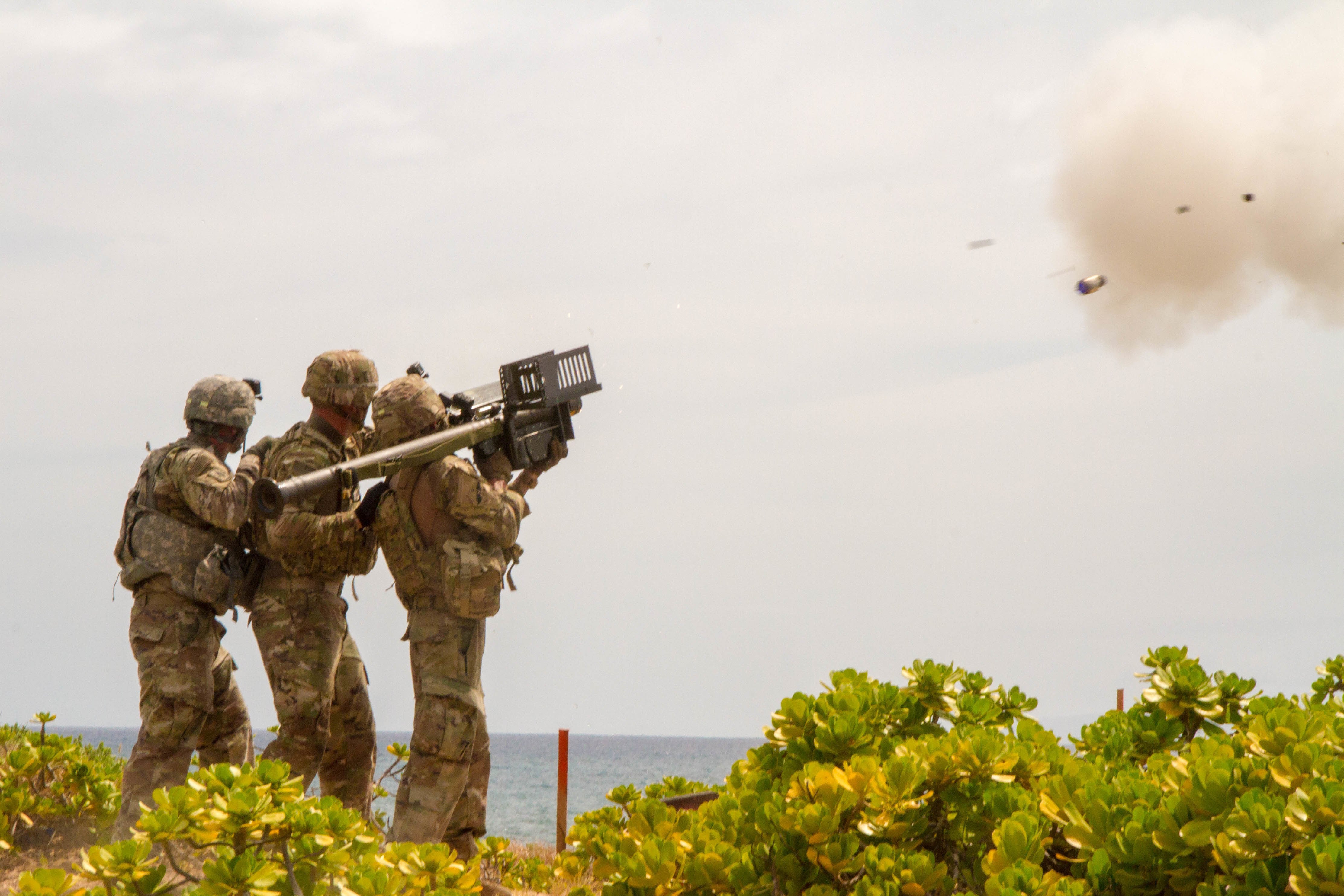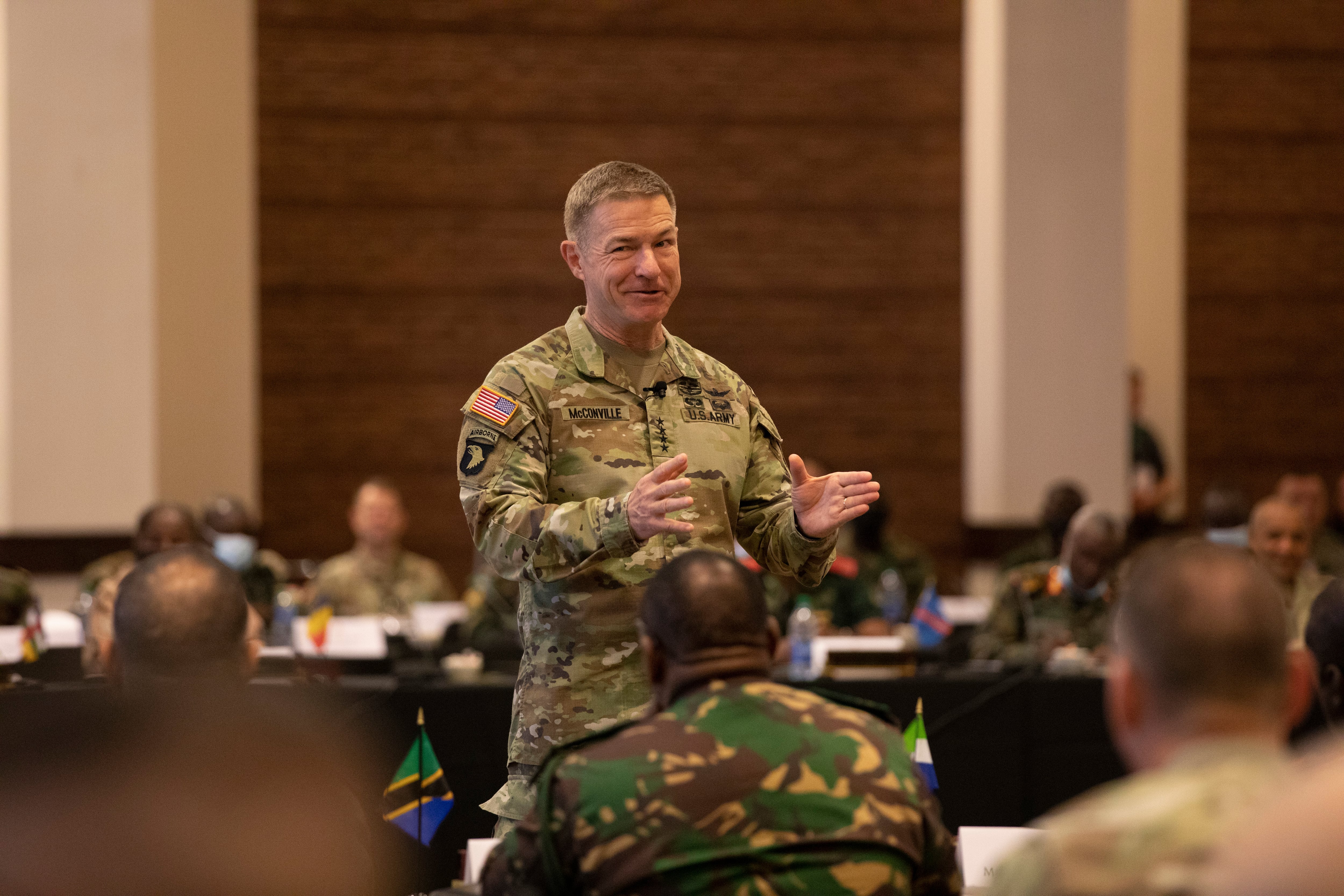WASHINGTON — When Gen. James McConville took over as Army chief of staff three years ago, he became responsible for overseeing the service’s biggest modernization push in 40 years.
The Army quickly faced new challenges, from navigating a global pandemic to exiting Afghanistan to helping Ukraine fight a full-scale Russian invasion.
With one year left on the job, McConville is fighting to fix the Army’s recruitment problem while trying to get 24 out of 35 new signature weapons systems into the hands of soldiers.
Defense News sat down with the chief ahead of the Association of the U.S. Army’s annual conference to discuss the state of the service, how world events are affecting the force and what he hopes to accomplish before he retires next summer.
This interview was edited for length and clarity.
What are U.S. Army units seeking in Europe amid the war in Ukraine?
The first thing that we want to do is replenish all the ammunition and weapons systems that we’ve [given to Ukraine], and we want to replenish with modernization. We’ve provided M113 armored personnel carriers — we don’t want to replace them. What we really want to do is take the Armored Multi-Purpose Vehicle and replace the [M113s] if we can, and that’s what we’re working on with Congress. Some of the systems like the 155mm artillery we’d want to replace with HIMARS [the High Mobility Artillery Rocket System], and we are taking a look at that. As we come out of it, we don’t want to buy new-old stuff; what we want to do is buy new-new things.
It’s not just material solutions, it’s also how we operate and reinforcing the idea that having a noncommissioned officer corps is extremely important. Logistics are extremely important if you’re going to support an operation like this because the rates of utilization for ammunition, especially with artillery, is fairly high in large-scale combat operations.
The Army is soon releasing Field Manual 3.0, the Army’s new doctrine that lays out multidomain operations. Does the service have the capability and resources to train soldiers on it right now?
We’re moving in that direction. We’ve had multidomain operations as a concept, so now it’s time to get [it] into doctrine that soldiers can actually use and leaders can basically practice and train. Deliberate practice gets us to where we need to do it.

It’s really at a good time because we’re at an inflection point. When we came out of Vietnam, we looked at 1973, we got some insights and put [the] AirLand Battle [doctrine] together. That’s where the “Big Five” [weapons systems] came [from]. We developed organizations, and then we progressed incrementally over that. But now we’re sitting here and we’re going: “OK, we came out of Afghanistan, we’re seeing what’s going on with Ukraine, we’re kind of confirming what we know.”
From an Army standpoint, we’re not trying to fight the last fight better; it’s about winning the next fight.
The Army still has many capabilities under development and not yet fielded in mass across the force to enable multidomain operations. Talk about the process of updating doctrine while bringing more capabilities into the force.
You’ll see incremental improvements. We’re almost resetting the Army around the concept of multidomain operations. Then what’s going to happen is, as threats change, new equipment comes, and then we’ll update our doctrine to reflect that, but it’s a fundamental change in how we look at things.
The notion that we’re going to have to fight from fort to foxhole is very different than what we had to do. We have to be ready to deal with how it can be contested. It could be cyber, it could be space, all these types of things are going to make it much more difficult for us to move things and operate.
In Afghanistan, we were stationary; we had grand command posts that we could operate out of. In the future, we don’t see that. We’re going to have to be small, we are going to have to be dispersed, we’re going to have to move. That changes the dynamics of, first of all, the structure. It also changes how you operate.
Units have to be able to take mission command because you don’t have a lot of time. You may not be able to tell them: “Turn left, turn right.” You give them much more mission command-type orders: “You seize this objective.” And they’re going to have to go, and they may not be able to talk to you for a while because of things that are happening on the battlefield.
The Army wants to shift attention Pacific operations. Is there a concerted pivot to the region?
As the National Defense Strategy says, China is the pacing challenge. It’s the No. 1 priority. And, quite frankly, for the Army, when you look at what type of forces we have, we are committed in the Pacific. What you’re seeing is new organizations. We’ve got the security force assistance brigades. We’re trying to work with allies and partners.
But more importantly, take a look at how the theater is set in Europe. And we are having the same discussions in the Pacific as well. How do you get there? Where do you want to have pre-positioned stocks? We do have pre-positioned stocks in the Pacific, but not at the same level; we do have logistics, we have a lot of the same type of things.
How do you account for a precipitous drop in confidence in military institutions and declines in recruiting?
My focus is on what we can do in the Army to get after this. What we’ve been told, and it’s playing out, is young men and women are having challenges passing the Armed Services Vocational Aptitude Battery test, which is basically meeting the academic requirements to come into the Army. It determines, just like the SAT determines what colleges you get into, whether you get in the Army and then, once you get in the Army, what you can do.
It used to be that about two-thirds who came into the recruiting station would pass the ASVAB. Now it’s a third. And then the same thing in the physical fitness test.
The secretary and I made a pledge: We’re not going to lower standards. Quality is more important than quantity.
We stood up a future soldier prep course at Fort Jackson, South Carolina. We’re getting good results. We’re seeing scores increase; 75% of the kids that went there, their scores have gotten up so they get in.
The other thing I was most impressed with is the young men and women that have gone through the four or five or six weeks of this course. If they successfully complete it, we’re letting them go right into initial military training, and we’re finding they’re actually ahead of the other kids coming in.
Jen Judson is an award-winning journalist covering land warfare for Defense News. She has also worked for Politico and Inside Defense. She holds a Master of Science degree in journalism from Boston University and a Bachelor of Arts degree from Kenyon College.





